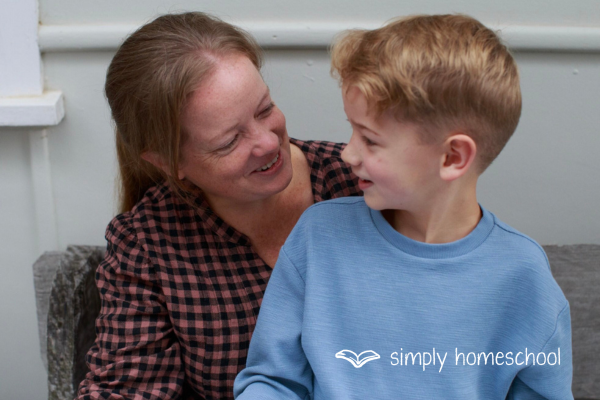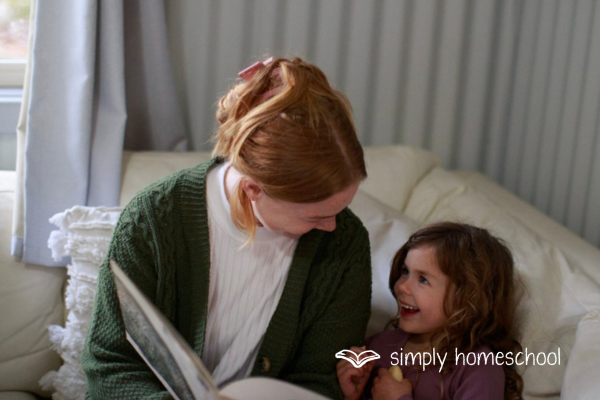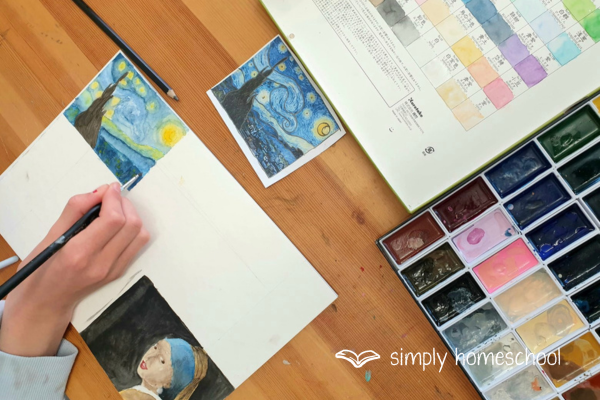Finding your homeschool rhythm (and sweet spot)
Homeschooling is a journey that shifts and changes over time. Some of us start out with colour-coded timetables and structured days. Others swing the opposite way, letting things unfold more naturally. Most of us end up somewhere in between.
There’s no one “perfect” rhythm for homeschooling. What works for your family this season may change completely by next season. Kids grow, needs change, life shifts. That’s normal. The goal is not a rigid schedule – it’s finding your homeschool rhythm and your sweet spot. There is no right way to homeschool. There’s only the way that works for your family, and that’s what we mean when we talk about finding your homeschool rhythm.
What is a homeschool rhythm?
A homeschool rhythm is the flow of your days and weeks. It’s the balance between structure and flexibility, between intentional learning and natural discovery.
Some families thrive with timetables. Others lean into spontaneous projects. Most find themselves somewhere in between – building gentle routines that give shape to the day without locking every hour in place.
Why rhythm matters
When you have a rhythm that fits your family, homeschooling feels less like juggling and more like breathing. You know what comes next. Your children feel secure. And you have enough flexibility to adapt when life throws a curveball (because it always does!).
Instead of chasing after the “perfect schedule,” rhythm helps you create a sustainable, life-giving flow.
Here are some ways to get there.
Start with yourself
Before thinking about your kids, ask:
- When do you get your best work done?
- Are you sharpest in the early morning, late at night, or mid-day?
- How long can you really concentrate before you need a break? (That’s your flow window – usually 60–120 minutes for adults.)
Knowing your own rhythm helps you support your kids without running on empty.
Notice your kids’ flow
Every child has a time of day when they’re most alert and a limit on how long they can focus before they need to move, eat, or rest. Some thrive early in the morning, others after exercise, and yes, some even after dinner.
Are you early risers or slow starters? Do your kids learn best in the morning or late afternoon? Notice the energy of your household and lean into it. Homeschooling doesn’t need to mirror a school timetable.
Try asking your kids when they feel most able to concentrate. If you’re not sure, observe them for a day or two, or even set a timer to jot down what they’re doing every 30 minutes. You’ll start to see patterns.
Tip: Flow grows with practice. Start small (10–15 minutes of focused activity) and gradually build stamina over time.

Sketch out a rhythm
Grab a piece of paper and map out:
- Alert time – when your kids can focus best
- Move time – when they need activity and energy release
- Calm time – moments when they naturally settle
- Hungry time – avoid meltdowns by planning around food
- Activity time – classes, co-ops, or outings you’ve committed to
- Flow time – when your child can sink into deeper learning
Then look at where these pieces naturally fit together. Instead of forcing a timetable, build your homeschool around these natural rhythms.
Don’t overfill the week
It’s tempting to say “yes” to every class, co-op, and playdate. But too much leaves you (and your kids) frazzled. Leave margin for downtime, unstructured play, and life – meals, laundry, errands, and even babies who need you.
As one wise homeschooler once told me: “The baby is the lesson.”
Leave room in your days for play, rest, nature, and curiosity-led learning. Over-scheduling is one of the fastest ways to burn out. Rhythm thrives in the balance of doing and being.

Support independent learning
If you’d love your kids to work independently, start with tasks that are both easy and enjoyable for them. Independence grows from confidence and competence. Success in simple things helps them stretch into harder ones later.
Build anchors into your day
Anchor points are simple, repeatable events that give shape to your day. Build your learning around these anchors instead of trying to schedule every moment.
Meals and snacks make great anchors for learning.
- Read alouds at morning tea (mouths are full, ears are open).
- Cooking lunch or dinner as hands-on lessons in literacy, numeracy, and life skills.
- Afternoon quiet time with audiobooks, Lego, or drawing to give everyone some brain space.

Create space for Core learning
Set aside regular times for key subjects like maths, or your current Core Programs – but keep it short, consistent, and achievable. Short bursts of focus are often more effective than long, draining sessions. If your child is enjoying more of a deep dive into a lesson or learning experience – wonderful!
Start small, adjust often
Especially if you’re just beginning, resist the urge to start with a packed timetable. Begin slowly. Add one or two anchor points. Let the rest grow naturally.
And remember: rhythm isn’t static. Your sweet spot today won’t look the same six months from now, and that’s okay.

Encouragement for the journey
Homeschool rhythm isn’t about replicating school at home. It’s about finding the flow that works for your family, in this season. Keep it light, keep it flexible, and keep adjusting.
Because in the end, your homeschool sweet spot is less about the timetable, and more about the connection, the growth, and the peace it brings to your days.
It’s about creating an atmosphere where learning feels natural, relationships are nurtured, and curiosity has room to grow.
When you feel wobbly, remind yourself: you don’t have to replicate school. You just have to find the flow that works for your family.
And here’s the good news – you’re not behind, you’re not failing, and you don’t have to do it all at once. One small step toward rhythm today is enough.



